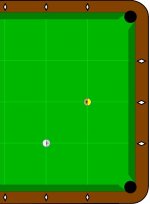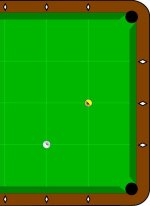I've been trying out Joe Tucker's aiming by the numbers system. if you're not familiar with it, here's Bob Jewett's review (pdf)
I think it's an ingenious way of picking out the contact points on the cue ball and object ball. I haven't tried it long enough to see if it really works for me, I'm just wondering about other peoples' experiences trying to learn this way of aiming. For me, I'm having a really hard time visualizing the contact point on the front of the cue ball. From my perception, it lacks the precision that is the point of the system. I may be crazy, but it seems easier to visualize the center of the ghost ball. Of course the aim is completely equivalent, it's just a different way of visualizing (in both cases the reference aim excludes throw and other factors, which Joe talks about).
Anyway, I was wondering if other people use the system, either with or without Joe's take on it, or had a learning curve trying to use it.
I think it's an ingenious way of picking out the contact points on the cue ball and object ball. I haven't tried it long enough to see if it really works for me, I'm just wondering about other peoples' experiences trying to learn this way of aiming. For me, I'm having a really hard time visualizing the contact point on the front of the cue ball. From my perception, it lacks the precision that is the point of the system. I may be crazy, but it seems easier to visualize the center of the ghost ball. Of course the aim is completely equivalent, it's just a different way of visualizing (in both cases the reference aim excludes throw and other factors, which Joe talks about).
Anyway, I was wondering if other people use the system, either with or without Joe's take on it, or had a learning curve trying to use it.

